In 1900, if you were lucky enough to have a ticket such as this one—and almost fifty million people did—you were in for an astounding treat. Paris and France went all out to make the Paris Universal Exposition the biggest and best yet anywhere in the world.
Although the Exposition seemed to have something for everyone, two words capture much of the spirit and substance of that great event: electricity and motion. As Charles Rearick writes in Paris Dreams, Paris Memories:
The fifty million visitors who came to the ‘Exposition Universelle’ were met with a dazzling profusion of electric lighting—in the pavilions and the Palais de l’Électricité and all the way up the Eiffel Tower. Outside the fairgrounds, the new lights illuminated the city’s monuments and the central boulevards.*
The newly constructed Pont Alexandre III led to the grounds, and provided lovely stopping points for flâneurs, flâneuses, and families. The ornate lamp standards might have looked like something from a far earlier age, but they were illuminated electrically: electricity and motion. Many who crossed the bridge would have travelled on the newly opened Métro in electrically driven cars: electricity and motion again.
For me, nothing captures the spirit of the Universal Exposition better than the image below.
It is a view of the Place de l’Ecole Militaire, looking towards l’avenue de Tourville on the right and to the left, l’avenue de La Motte-Picquet. There is plenty of motion at street level. But what of the two elevated roadways? On the left passengers are being treated to a ride on an elevated electric railway. The other simply looks like an elevated roadway or sidewalk.
Look more closely at the happy group standing above. They don’t seem to be walking. There are more people behind them, also standing still. Why is there a semi-circular section on the sidewalk? And what are the waist-height poles to the left? Do you see the hand on top of one? We need to look at some other photos.
Here is another calm scene on the elevated sidewalk or roadway or whatever it is. On the left is a group standing on the sidewalk. We also see the poles in two distinct lines and note that the sidewalk is actually on three levels. And the wooden planks on the two higher levels follow the direction of the sidewalk and the lower level is at right angles to the direction of travel. Notice what looks like a station or shelter further along the sidewalk on the right side.
This was taken beside the building we saw in the previous photo. The child in the foreground seems to be a little unsure of his footing. Perhaps the man with what appears to be a porter’s or conductor’s cap is helping to keep the child from falling over. Beside the child, a man appears to be helping a woman move to the highest level of the sidewalk. Their images seem blurred because they are unsteady. It seems a rather animated scene. But the next is even more so.
There is a lot going on. The man on the right wearing a bowler (or fedora) is rushing forward with hand outstretched to rescue a woman who is falling over. She is taking quite a tumble, he won’t get there in time, and she is going to hit the railing and the wooden sidewalk. Further back: more action. A woman is moving from the second to the third level; one skirted leg is thrown back. The lady with light coloured skirt, hat and parasol seems fine. Moving over to the left again, the lady wearing a dark skirt and the child are holding hands and both seem bent over determinedly. They seem to be bucking the wind or are leaning forward as if they had just got onto something moving and did not want to be thrown backwards. The two figures on the left, the man leaning on a railing and a woman admiring the view, are pictures of composure.
We have been looking at le trottoir roulant, the moving sidewalk, which in its day was one of the most famous marvels at the Universal Exposition of 1900. Historian Anne Friedberg writes:
The Paris trottoir was a two-mile-long, electric, three-tiered sidewalk. One trackway was stationary, the next moved at two-and-a-half miles per hour, the third at five miles her hour. The moving boardwalk moved bodies to see the grounds from new points of view at new speeds of movement. And the walkway itself was an exhibit, as patrons could sit and watch fellow fair-goers mechanically stroll.**
To get a real sense of what the experience was like (we suspect that the image above was staged), check out the video here. The film-maker? Thomas Edison. Notice how the passengers grab hold of the posts to swing on and off the sidewalk.
Alas, like the Gigantic Wheel at the same fair, le trottoir roulant had been preceded by a version at the Chicago World’s Columbian Exhibition in 1893. It shares something else as well.
Most of the grand structures and attractions built for great expositions are rather short-lived. The Eiffel Tower is a magnificent exception. In this street-level view of the moving sidewalk above, we see the support structure is rather roughly made of heavy wooden timbers. It was intended to be temporary and was eventually torn down.
Today the idea of a moving sidewalk does not seem at all novel. As we rush through airports wishing the moving sidewalks would go faster or as we travel on them in the Paris Métro—particularly that very long stretch in the Montparnasse station—we might pause to think of a time when they were novel, and if you got it just right, actually enjoyable.
Text by Norman Ball; images from the Roger-Viollet collection, Paris en images
* Charles Rearick, Paris Dreams, Paris Memories: The City and Its Mystique (Stanford University Press, 2011), p. 13.
** Anne Friedberg, “Trottoir roulant: the cinema and new mobilities of spectatorship,” in John Fullerton and Jan Olsson, eds., Allegories of Communication: Intermedial Concerns from Cinema to the Digital (John Libbey Publishing, 2004), p. 265.

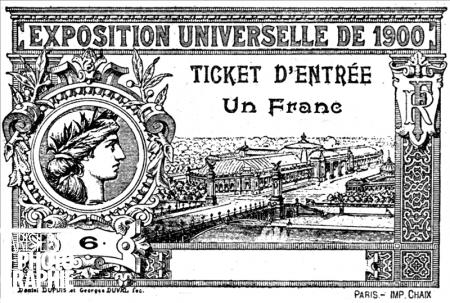

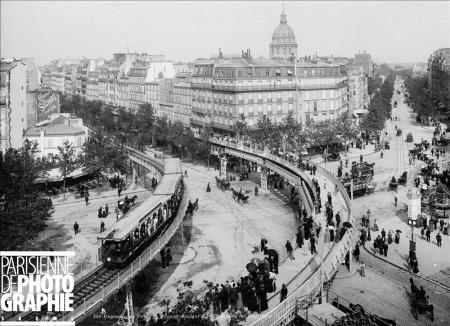
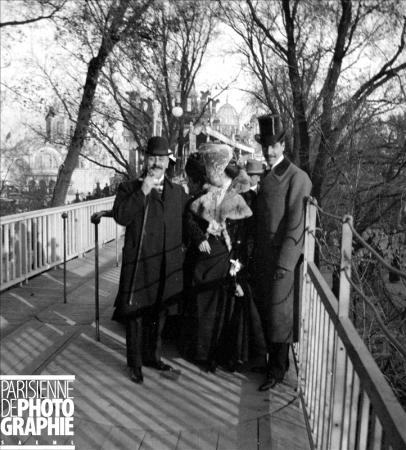

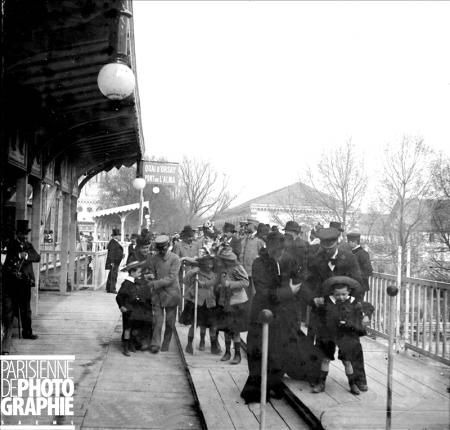



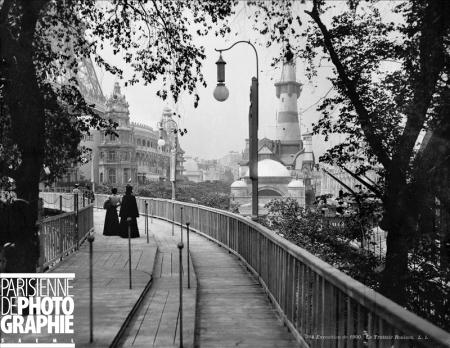








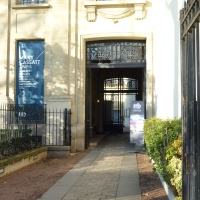
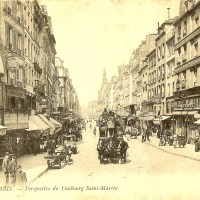










A most excellent story, thank you. I had never heard of the “trottoir roulant.” What a great event the World Fair must have been! I loved looking at all the old photos too. Veronique (French Girl in Seattle)
I thoroughly enjoyed this story! Paris must have been a magical city circa 1900, but then again Paris is always magical! Thanks for sharing.
Reblogged this on The Traveling Pear.
Came across this as I did some backup research for my own post on moving sidewalks. Love your post- and love all the pictorial and video details. Thanks for sharing!
I just saw the video images in a Dutch TV program and was searching for more information. I love your summary and pictures. Thanks!
I wonder why we do not have this kind of fun stuff in cities today.
its actually filmed in this vintage sequence of paris here: https://www.youtube.com/watch?v=NjDclfAFRB4